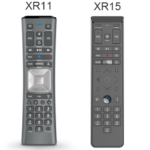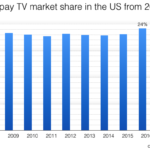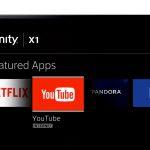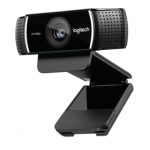Comcast wants you to enjoy your TV by talking to your remote
Comcast wants you to enjoy your TV by talking to your remote

As the largest cable and Internet TV service company around the nation, Comcast hopes to provide a more convenient and seamless TV experience for its users after the releasing of the X1 TV entertainment platform in 2014 and the X1 voice remote in the next year. According to Comcast, they have been receiving and analyzing over 3.4 billion voice commands in 2016, and hope to notch up the data to over 4 billion within this year. The company by far has distributed voice-control remotes to about 12 million homes. More than half of its residential Xfinity TV users are getting benefits from the new way to interact with their TV.
Just because how Comcast has massively changed the way people enjoy TV and shows, the National Academy of Television Arts & Science announced that Comcast has won an Emmy Award for Technology and Engineering, and this award specifically honors the work of the technology teams focusing on the Xfinity X1 Voice Remote and the innovative platform that powers it. The Emmy Award for “Contextual Voice Navigation for Discovering and Interacting with TV Content” will be given to the team at the Technology and Engineering Emmy Awards in Las Vegas on April 8, 2018.
Seamless experience makes TV access to all
The X1 voice-control remote consists of two modes: XR11 and XR15. Its major features and benefits include voice control, automatic pairing, aim anywhere feature, TV input control, and easy access to accessibility features such as Closed Captioning, video description, and voice guidance. Users are able to speak to a remote to change channels, search content, or record; then the voice signal will be transmitted to the Comcast cloud system via the set-top box.
Thanks to the enormous user base of Comcast, they created this cloud system that contains 50,000 computers to analyze countless voice commands from millions of users. Your voice command will be compiled and analyzed by artificial intelligence into text information. The interpreted text will send back to your set-top box and present on your television to finish the task. Though the whole process can seem very complicated, it is done in seconds with a real seamless experience. Moreover, because of this function of the remote, you will be able to hide your cable box from sight once it has been paired with the remote so your entertainment system will look cleaner and visually more enjoyable.
Users could also enable the Talking Guide and Video Description feature so that the platform could cooperate with the remote to provide voice guidance that gives users with visual disabilities the freedom to independently explore and enjoy thousands of TV shows and movies. The talking guide will speak what is on the screen and include details to help users decide what to watch.
The X1 voice remote also has a lot of user-friendly details for general users as well. One of these details is the backlit keypad. When we pick up the remote, the keypad will light up automatically with a soft glow. This little detail will work especially perfect in a dark environment for the user.
Huge market with intense competition
Voice control and recognition technology first became popular in the 1990s. Nuance, as one of the most famous voice recognition companies around the world, released the first commercial product: DragonDictate. However, due to the limitation of the technology, most of the products back then couldn’t provide stable and reliable results to costumers. Though there were several companies focusing on this field afterward, the field did not get much attention until Apple released Siri for iPhone 4S. The positive user community response of iPhone makes voice control once again become the most exciting function for normal consumers. Thanks to the rapid development of machine learning, AI, and IoT in recent years, the technology and market competition of voice recognition becomes more and more intense.
Before Apple released Siri, it had acquired the voice recognition company, Siri.Inc and the British start-up VocalIQ to keep optimizing its product. When Apple made the first step, Google also started to develop its own voice team by purchasing more companies and start-ups that specialized in related fields such as SayNow, Phonetic Arts and so on. Many tech giants have shown their interests in voice recognition technology and kept presenting competitive products. Alexa from Amazon, Siri from Apple, Google Now, and Microsoft’s Cortana are some of the representatives on the market. Most of these companies, however, are based on the software development under the larger-scale concept as IoT to update their service or provide hardware products like smart speakers.
Distinct from these Silicon Valley giants, Comcast is relying on its own cable and Internet TV technologies, as well as the foundation of their long-developing business. The company is actually causing a deeper impact regarding voice control and recognition market. Reportedly, under the new 25Mbps broadband definition, Comcast now has more than half of all US broadband customers (56% of market share). Data from Statista also shows that Comcast shares almost one quarter (24.1%) of the paid-TV market of the US in 2017. Just because of these broader supports from the general user community, Comcast has been able to build that rich database in only two years and to offer better interaction and connection service between users and TV.
Though Amazon holds almost 70% of the voice-controlled speaker market, compared with Comcast’s voice-controlled cable and Internet TV service, those more or less geek style speakers are relatively less interesting to the normal users.
Another different aspect between Comcast and these tech giants is, depending on the development of smart television, Comcast will be able to share API to developers and cooperate with other service providers to make the X1 voice controlling system more Internet-based. Television, as one of the most crucial home appliances, is being used every day for every family around the world, so it is very likely to become the core of other smart appliances.
As the tool of interacting and controlling TV and services, X1 voice remote will be the most important factor in the entire smart home system. Maybe now, we are not able to check the weather, ask traffic condition, or order food via the X1 voice remote, but Comcast has been gradually getting prepared for the broader development of voice control technology. According to some reports, we did notice the efforts of Comcast’s ambitious plan.
This September, Comcast quietly introduced the Xfinity instant TV streaming beta service to its Internet customers that will allow subscribers to enjoy TV content across devices on multiple platforms seamlessly through the Xfinity App. The service begins at $ 18 per month. This new launching service obviously shows Comcast’s hope to build an entire entertainment system based on Internet-connected smart devices. No doubt, the voice then, would be the best way to link and operate all these smart devices.
Based on our official database, the total funding amount of the voice recognition market has achieved to over $ 86 million and has been valued at $ 6.19 billion in total revenue for this year. Research conducted by MarketsandMarkets shows that by 2023, the entire market is likely to reach over $ 18 billion at a growing speed of 19.8% between 2017 and 2023. When facing such a huge potential market, whoever has the bigger user communities, and also takes prompt action will mostly seize the advantages of the market. With benefits from the broader consumer base in cable and Internet TV field, Comcast is definitely the most guarded and competitive opponent that is very likely to succeed in the intense voice control and recognition market competition.
The post Comcast wants you to enjoy your TV by talking to your remote appeared first on ReadWrite.
(44)








